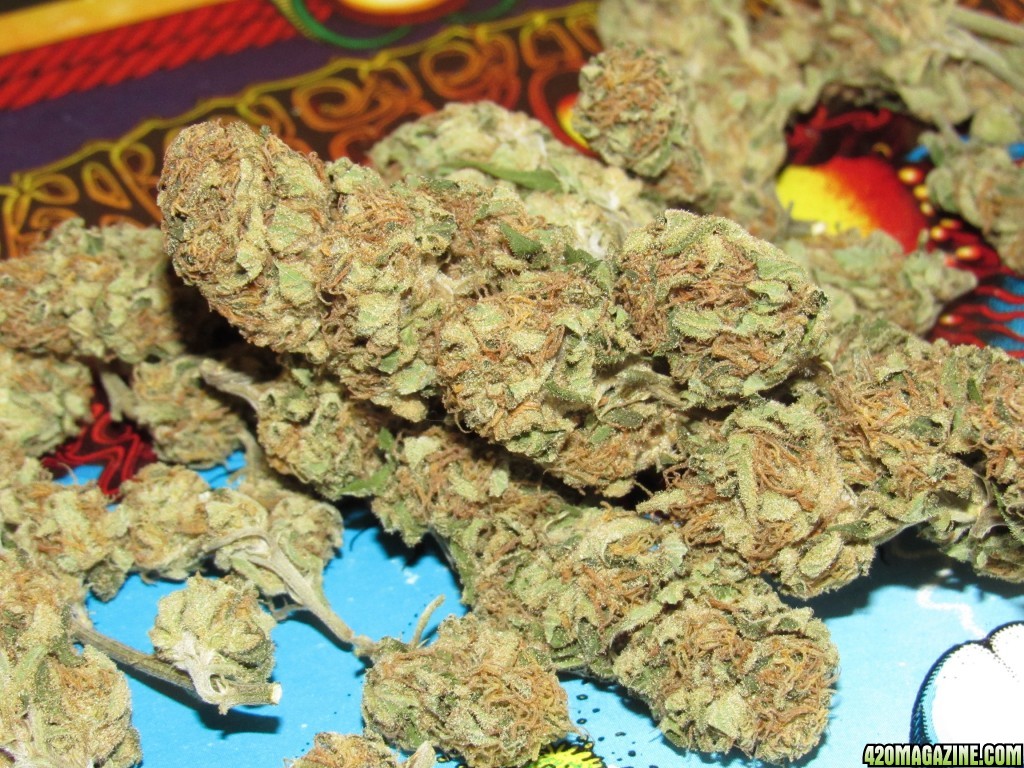Yah, that is a curing process that results in partial fermentation of the leaves. Lowland Colombian is (or was) cured that way as well. It is called sweat cured pot. I call it composted pot. The colas/tops are cut when ripe and layered fresh in piles one to two feet high and in a square, anywhere from 3'x3' to 10'x10'. The pile has to be big enough to compost. Within a few hours the leaves begin to heat up from the microbial action the same way that a compost pile does, and the leaves ferment and turn brown. The green tops turn brown pretty quickly. The piles of tops in the compost piles are unpacked daily and checked, and the tops that have turned brown are removed and air dried. Within a week, all the tops will have turned brown. You have to make sure that the pile does not overheat and cook the colas. You also have to make sure that the tops do not rot or over-ferment in the process. You should cover them to keep the rain out as well, but the cover should be at least a few feet above the pile to prevent rotting.
A variation of the sweat process was done in Colombia when cut marijuana tops were bricked fresh. The bricked pot was stacked and cured, or loaded onto trucks and cured during transport. They were then air dried and wrapped in plastic. A simplified process for a slow sweat cure is to roll fresh marijuana in plastic bags. Each week, open the bag for about an hour to evaporate off some water. In about six weeks, the ammonia smell will dissipate somewhat, and the grass should be dried. The problem with this process is that there is not enough material to compost the pot rapidly. This cure supposedly works well with small quantities of mediocre grass, since it concentrates the material. I have never tried this though, as I usually process any low grade pot, male flowers and all the trim leaves into hash or hash oil. It is amazing how much excess leaves, stems and trim you get growing weed. It can be overwhelming, to the point that some years I have just piled it all up and burned it.





 That would have been in the fall of 1976.
That would have been in the fall of 1976.





